
Some of my friends may remember my earlier blog, “Can a Book Intimidate people?” If you have not read it, you can find it at this link: https://kenthospitals.com/motivation/can-a-book-intimidate-people/. That blog was about a 26-page book “Element of Style” by Strump and White, published in 1918, for which I paid Rs. 800/- on Amazon. Only to find later, it is available totally free of cost at this link: https://faculty.washington.edu/…/public/StrunkWhite.pdf. I learned most valuable writing skills explained in mere 26 pages.
However, that was not enough for me. I had a very high ambition of writing fictions and motivational books. I kept searching for a simple surefire formula which could help me to write a novel. I Read many run-on-the-mill kinds of books and none quenched my thirst. One such book spoke very high of a reference, “The Art of FICTION – Notes on Craft for young writers” by John Gardner. I searched on the Google if a free download available. Obviously, I didn’t want to lose my money like earlier! I couldn’t find it. Unlike “The element of Style,” this 225-page paper-back cost me only Rs. 400. However, this book not only intimidated me, but it also made me depressed and frustrated.
It intimidated me because of its slow readability. I have reached a reading speed of 800 wpm (words per minute) with my avidity for books. However, this “The Art of Fiction” slowed me down to 200 – 300 wpm. It depressed me because the author has quoted several classics as examples, which I have never heard of! Famous authors like Leo Tolstoy and D.H Lawrence are ok. Unfortunately, I didn’t have a clue about William Faulkner, Isaak Dinesen, Donald Barthelme and a host of others. It was frustrating because the author doesn’t suggest any simple formula which I could follow!
I persisted on this densely packed book as I had paid for it! John Gardner was a famous teacher of creative writing as well as an accomplished author. He has poured his abundant experience from his courses and seminars into this informative book. It’s an excellent book for young or amateur authors who are serious about making it big. The book is organized into two parts. While the first part deals with the literary-aesthetic aspects of writing, the second part deals with the fictional process.
At the outset, the author states that the “writing ability is mainly a product of good teaching supported by a deep-down love of writing. The art of writing depends heavily on feeling, intuition, taste“. He elaborates extensively on basic skills, genre, and narrative methods with appropriate examples from world literature. Earlier I never had a clue about metafiction, deconstruction and jazzing around type narrative styles! What I liked most was a chapter on “common errors.” His explanation with examples gave me an opportunity to understand my mistakes.
I always worried about my English vocabulary as my education till high school was in Kannada medium. English was a second language, that too introduced during the fifth standard. English was taught to us like a subject, not like a language! However, I am supremely pleased to learn, “A huge vocabulary is not always an advantage. Simple language, for some kinds of fiction at least, can be more effective than complex language, which can lead to stiltedness or dishonesty or faulty education.” Another exciting feature is the author has also used geometrical shapes and algebraic formulas to describe the plotting! He has enumerated several exercises in the end for us to practice. And I have not tried them yet!
Overall, it is a fantastic guide for all would be “Best-selling” authors!
Prof. Dr. Prahlada N. B
10 January 2019
Chitradurga.





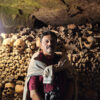
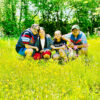




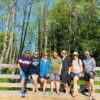


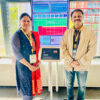

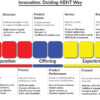
Leave a reply